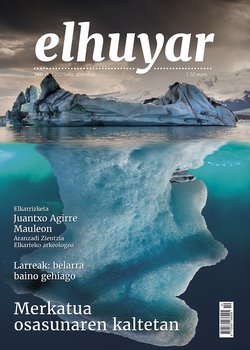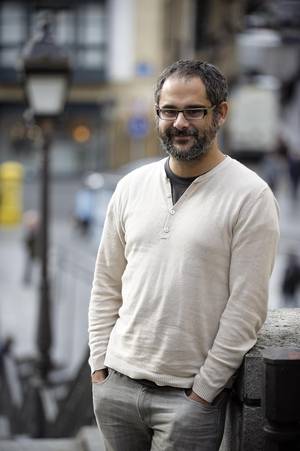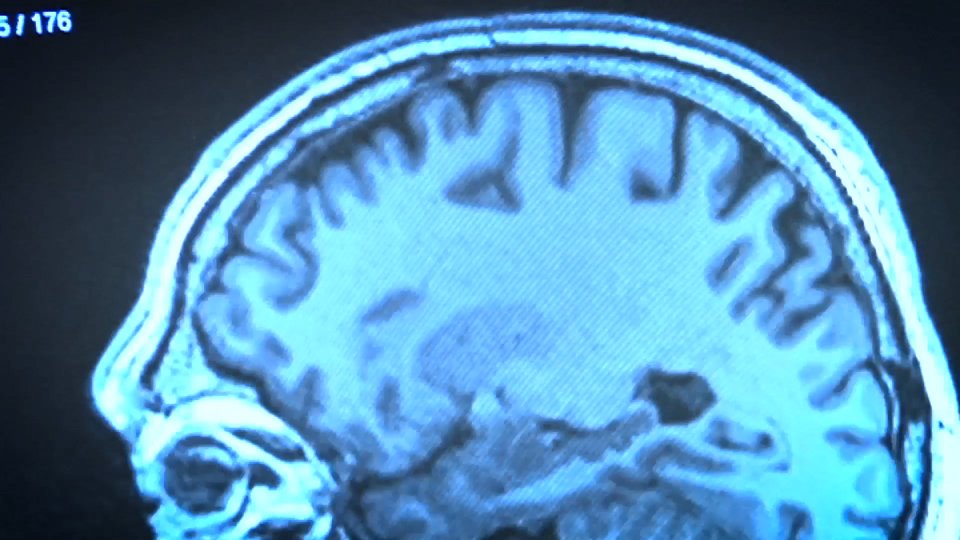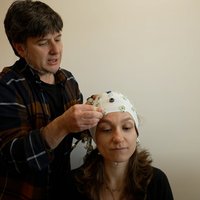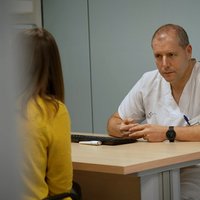"Until not many years ago there were many advances around the Neanderthals"
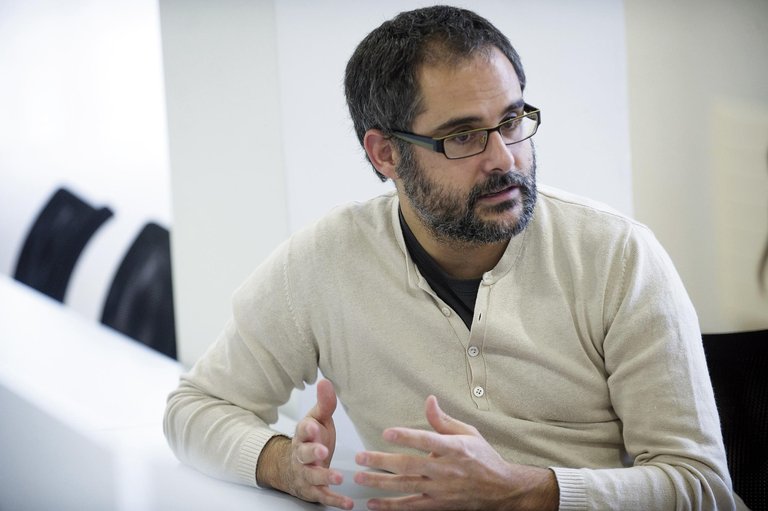
Yes, because the lithic industry allows to obtain information and draw conclusions: on the one hand it is very well preserved and, on the other, it is very abundant, in almost all the deposits there is some piece. In fact, a deposit is a human and not only paleontological deposit, but there must be some instrument. They are tools used by humans, which allows us to know the technological organization of these human beings and what they did in a given place or with certain tools.
Therefore, the lithic industry gives us a very broad vision. The economy, the territory, the social organization and the norms, the behavior... allow us to know many aspects from the legal industry. And the first periodizations have also been made from lytic instruments, that is, classifying and placing in time the instruments found. This has allowed to differentiate the periods or time intervals of the Paleolithic. Therefore, we can say that the lithic industry is very important, and as it is very rich there are a lot of specialists who are always moving and investigating new things.
Of course, because they are usually complementary studies. For example, in a deposit there may be useful stone and, if the conservation is good, there may also be remains of animals ingested. And in those animals you can see remains of cuts. With all the data, you can have a full photo or know a single aspect. To make a correct interpretation it is necessary to receive all the views.
Precisely, I think it is one of the great incentives of our work. You have an idea and are working on this line, and suddenly you read an article or have news of a discovery made by a companion, which makes you change the hypothesis you had until then. This occurs many times and is also very important not only in archaeology, but in science in general.
For example, not many years ago there were many advances around the Neanderthals: that they did not have a specific strategy to hunt, that they were coachmen, that they were not able to organize society and the economy, that they had an opportunistic behavior, etc. And that, why? Because they saw that there were no great variations in Neanderthal instruments. But this was because the classification they had was not adequate to see the variability they had. In fact, they carried out a typological analysis, that is, they classified the tools according to their appearance, and on the basis of this they believed that the technology of the Neanderthals was very basic and did not change with time.
Then, however, came other analyses such as technology. With this analysis, in addition to appearance, a process is observed to reach that appearance. And so they were discovering that the manufacturing processes of the tools were very varied among the Neanderthals, not only depending on time but also depending on the place.
In addition, they realized that some behaviors were unopportunistic and were planned. It is seen in Axlor, for example. Around Axlor (Dima) there is no stove and they liked the stove because it is very easy to work, the mouths are sharp, they last long… The surrounding stones were of low quality. So what did they do? Well, in some times, tools of ashlar stone were used in another place, which when eroded made with stones of their environment those who needed. It can be said that this behavior is quite opportunistic. But there are other times when it is seen that they were going to the place where the cantile was, there they were made the useful and they were taken to Axlor. And in addition to using these Axlor tools as such, they used them to extract chips from them and to make other useful. There is a planning.
Yes, and in that there has also been another change of focus or revolution. At first it was thought that the Neanderthal territories were quite limited; they were small populations. Because to control a large territory you have to have some planning to know where the resources are (hunting, water, caves, fruits...) and when and how to get them.
Well, in the territory known today as Euskal Herria there are three great Neanderthal sites: Axlor (Bizkaia), Lezetxiki (Gipuzkoa) and Arrillor (Alava). The three are located in a small triangle, with a maximum distance of 15 km from one place to another. And in the three it is observed that at some levels they have tools made with nearby rocks, but to others, manufactured with firewalls. And that fire brought him from the coast of Biscay, or from Gipuzkoa, or from Urbasa, or from Treviño. Placing these spaces on a map shows that the Neanderthals were moving in a relatively wide space.
Furthermore, the ecosystems of these places are very different from each other, and they were all exploited. This means that they knew the territory well and were able to adapt the modes of life, hunting strategies, etc. To each place.
Yes, that too. The transmission of knowledge and technology, essential for the exploitation of this territory, was carried out for a long time. Most of the remains of Neanderthals we have here are from the last Middle Paleolithic, that is, between about 60,000 and 40,000 years ago.
However, in this period the Neanderthals had a great diversity of behaviors, and in this sense, the three sites mentioned are very important, which have very wide stratigraphic sequences: In Axlor there are at least ten levels, in Arrillor one tenth more, in Lezetxiki six and seven, and sometimes there are notable and other very small differences. This shows that the Neanderthal populations, in addition to their chronological and geographical variability, had a historical evolution.
Therefore, from my point of view, it is very difficult to talk about the life of Neanderthals. We must know what time and where we speak of Neanderthals, we cannot generalize. Or, to have an overview, you have to start from the archaeology of the place.
That is. The truth is that to understand the first human occupations in Europe there are very important places. One is Atapuerca (Burgos), another Orce (Granada), others are in France... and what is in the center? That is the question. And it is not a simple matter, because we want to know where those first human beings came from: From Africa or Asia. And to know it you have to know the intermediate places.
Thus, we choose what today is Euskal Herria, in fact, which is a cruise between France, the Castilian plain, Cantabria and the Ebro valley. These four spaces are very important to understand the time we want to investigate, so we wanted to know what happened here. However, in the bibliography there was hardly any synthesis. There is one, that of Alvaro Arrizabalaga, of 2005, and although it was quite complete, since then there have been important changes: excavations have been made in both ancient and new deposits, new methodologies have been used to study the remains that were known... Unfortunately, we have not found human remains, except for the famous humero of Lezetxiki, but perhaps in the coming years we can get something.
Therefore, taking into account all this information, we have made a renewed synthesis, with new ideas and extending the new lines of research for the coming years.
Above all we have shown one thing with this work. Until now, excavations were carried out at a little depth, up to a meter of depth or, if nothing was found, no excavation was continued. In fact, the most important vestiges for them were those of the Upper Paleolithic, because they wanted to demonstrate the relationship that existed between the men of that time and the Basques of today. That was the intention of Barandiaran, so there were hardly any remnants of the lower Paleolithic. Lezetxiki is an exception, but normally it was not excavated in depth.
But then, when with other objectives we have induced lower levels, we have seen that there are older tracks that can be in other places. We will have to design another type of excavations to find them.
For example, the case of Arlanpe is very significant. If you're going, you'll see that it's a very small hole and at first glance there doesn't seem to have to be anything. However, it is a very old cave, inactive for a long time, in which numerous remains have been found, including the Lower Paleolithic. And in Askondo we have also found remains of the Middle Paleolithic, but at great depth under a sterile level. In a time they would not reach that depth, but now we will look for it. There has been a change.
It is worth mentioning, in addition, the importance of some of the tracks found to know the technological organization. Thus, next year we will publish several investigations here carried out in this matter and we will become a reference in the whole Cantabrian cornice.
Another thing is that before, when making the datations, they did not have the possibility of making concrete datations, so it was acted with great prudence. For this reason, it was said that the oldest tracks are about 100,000 years ago. But then came the Atapuerca revolution: first they found remains 500,000 years ago, then older, and now they are in 1,200,000 years. And perhaps you will also find the older ones.
Is it credible that from here to 100 km there are vestiges so old that here the oldest have only 100,000 years? That is impossible. This has led us to rethink everything and place things in their time. For example, at the Mendieta site or the Irikaitz site it was thought that some things were from the lower Paleolithic, but they looked older, more archaic. We have tried to date and we still have no definitive results, but, from climatic data, we have seen that they are two glaciations.
In fact, the most prudent thing would be to think that they are of the last interglacial period, but considering the type of industry, it is more logical to think that they are interglaciers before, of 500.000 years ago. Or why are they not earlier? To confirm this, another dating is needed, but it does not say to follow the 100,000 years with meaning.
I am currently working in the south of France, with Laurence Bourguignon, and the dating of this place is 1,200,000 years. It is the same in Atapuerca as in Orce. It has to be something in the center. It may have disappeared, but there is a possibility.
Yes, one of the lines I carry at the cenieh is that. Another thing is what happened from the Middle Paleolithic to the Upper Paleolithic, why the Neanderthals disappeared...
Yes, very typical, and lately we have a huge bombardment about it, everywhere: from genetics, paleoanthropology, archaeology... And,
Often with very suggestive hypotheses, but in most cases with few tests. It always happens the same in science that we have to move, if we stay in the place where we are safe, there is no movement. Therefore, we have to go to the limit, but of course, moving to the limit is dangerous; sometimes you go to the dark side and sometimes you stay where you were. The best thing is to get balance, not to say things always, but to try to find new ideas to move ideas.
Buletina
Bidali zure helbide elektronikoa eta jaso asteroko buletina zure sarrera-ontzian


